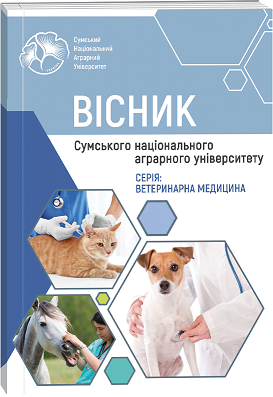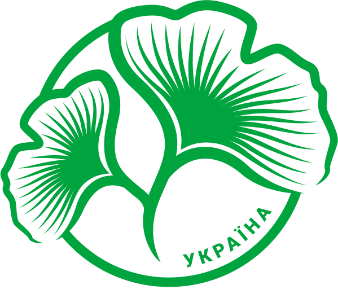PRACTICE OF FORENSIC VETERINARY EXAMINATION OF INJURIES TO ANIMALS CAUSED BY SHARP OBJECTS
Abstract
The study examines the practice of forensic veterinary examination concerning injuries to animals caused by sharp objects. It demonstrates that injuries inflicted on animals by sharp instruments are the subject of forensic veterinary analysis aimed at resolving identification (determining whether fragments of a sharp object belong to a single whole), diagnostic (determining the nature and localization of injuries, the sequence of their infliction, whether they occurred during life or postmortem, and causal relationships), and situational (the mechanism of injury formation, and the feasibility of their occurrence under established conditions and circumstances) tasks. Data from expert practice indicate that injuries caused by sharp objects include scratches, cuts, wounds, fractures, dismemberment, dissection, chops, slashes, grooves, and carvings. It is argued that the morphological characteristics of injuries caused by sharp objects are determined by the mechanism of action of specific parts of the injurious tool, its shape, size, mass, degree of sharpness, the force of interaction with the animal’s body, the direction of movement, the path length within the body, the localization of the injury, the morphological features of the affected tissues, and the hardness of the underlying tissues. The focus is placed on the fact that the objects of forensic veterinary examination in cases of injuries caused by sharp tools include the bodies of animals and live animals, regardless of ownership (private, state, or communal), living conditions (in captivity or natural habitats), productivity (productive or unproductive), housing (domestic, farm, wild, zoo, stray, etc.), purpose of use (entertainment, performance, cinematographic, sports, or special events, experimental purposes), age (young, mature, or old), and gender (male or female). It is shown that forensic veterinary experts specializing in expertise under specialty 18.1 “Veterinary Research” are the authorized subjects for conducting examinations of live animals to evaluate injuries caused by sharp tools. The practical significance of the work lies in substantiating the purpose of forensic veterinary studies of animals injured by sharp objects: determining the nature of the injury, its localization, shape, dimensions (diameter), direction of the longest dimension on the body surface relative to the anatomical axis, the features of wound edges, ends, gaping, wound canal, wound base, grouping of wounds or lack thereof, damage to deep tissues or organs in the wound projection, and detecting foreign inclusions. It also includes assessing the severity of harm caused to the animal’s health, the nature of the mutilation due to the injury, and resolving other expert tasks within the competence of the forensic veterinary expert or upon request from the appointing authority or engagement of a forensic expert.
References
2. Caceres, P., Awada, L., Weber-Vintzel, L., Morales, R., Meske, M., Tizzani, P. (2023). The World Animal Health Information System as a tool to support decision-making and research in animal health. Rev. Sci. Tech., 42, 242–251. DOI: 10.20506/rst.42.3367.
3. Cooper, J. E., Cooper, M. (2021). Veterinary involvement in forensic medicine. Vet Rec., 189, 6, 249–250. DOI: 10.1002/vetr.1004.
4. de Siqueira, A., Cuevas, S. E., Salvagni, F. A., Maiorka, P. C. (2016). Forensic Veterinary Pathology: Sharp Injuries in Animals. Vet. Pathol., 53(5):979-87. DOI: 10.1177/0300985816655850.
5. Ghui, M., Eliopoulos, C., Borrini, M. (2024). A proposed method for differentiating knives from cut marks on bone: A forensic anthropological approach. Med. Sci Law., 64(3):199-203. DOI: 10.1177/00258024231198912.
6. Grada, A., Mervis, J., Falanga, V. (2018). Research Techniques Made Simple: Animal Models of Wound Healing. J/Invest/ Dermatol., 138(10):2095-2105.e1. DOI: 10.1016/j.jid.2018.08.005.
7. Hilbe, M., Sydler, T., Hugentobler, L., Heller, O., Stadler, T., Kuratli, J. (2024). Forensic wound age estimation in dog tissue correlated with newly formed collagen fibres: a retrospective study. J. Comp. Pathol., 215:81-90. DOI: 10.1016/j.jcpa.2024.10.006.
8. Hogue, M., Fairgrieve, S. I., Lievers, W. B. (2020). Stabbing angle alters peak force and work during sharp force trauma of porcine ribs. Forensic Sci Int., 314:110373. DOI: 10.1016/j.forsciint.2020.110373.
9. Hsiou, C. L., Hsu, C. C., Liao, P. W., Yang, F. H., Lee, A. N., Huang, W. H. (2022). Forensic Death Investigations of Dog Bite Injuries in 31 Cats. Animals (Basel), 12(18):2404. DOI: 10.3390/ani12182404.
10. Humphrey, C., Kumaratilake, J., Henneberg, M. (2017). Characteristics of Bone Injuries Resulting from Knife Wounds Incised with Different Forces. J. Forensic. Sci., 62(6):1445-1451. DOI: 10.1111/1556-4029.13467.
11. Jarvis, S. (2024). Advocating for animal rights. Vet. Rec. 194(10):369. DOI: 10.1002/vetr.4270.
12. Johnson, D. J., Raymond, D. E., Chen, C., Quon, M., Lis, J., Choi, M. R., Lopez, C., Han, A., de Leon, R. D., Bir, C. A. (2018). Molecular Method to Detect Wound Cells in Bloodstains Resultant of Sharp Force Injuries for Crime Scene Reconstruction. J. Forensic. Sci., 63(3):842-848. DOI: 10.1111/1556-4029.13623.
13. Kobzieva, T. A., Shein, D. S. (2021). Porivnialnyi aspekt orhanizatsiino-pravovykh zasad zakhystu tvaryn v Ukraini ta derzhavakh YeS. [Comparative aspect of the organizational and legal basis of animal protection in Ukraine and EU countries]. Elektronne naukove vydannia «Analitychno-porivnialne pravoznavstvo», 260-264. DOI: 10.24144/2788-6018.2021.03.48 [in Ukrainian].
14. Lockwood, R., Touroo, R., Olin, J., Dolan, E. (2019). The Influence of Evidence on Animal Cruelty Prosecution and Case Outcomes: Results of a Survey. J. Forensic Sci., 64, 6, 1687–1692. DOI: 10.1111/1556-4029.14085.
15. Loza, T. V. (2023). Problemy orhanizatsii sudovo-ekspertnoi diialnosti v Ukraini ta shliakhy yikh vyrishennia. [Problems of the organization of forensic expert activity in Ukraine and the way of their solution]. Elektronne naukove vydannia «Analitychno-porivnialne pravoznavstvo», 6, 633–641. DOI: 10.24144/2788-6018.2023.06.112 [in Ukrainian].
16. Lozo, O. V., Piliushenko, D. O. (2020). Aktualni pytannia pravovoho rehuliuvannia zakhystu tvaryn vid zhorstokoho povodzhennia. Yurydychnyi naukovyi elektronnyi zhurnal, 7, 225-228. DOI: 10.32782/2524-0374/2020-7/57.
17. McDonough, S. P., McEwen, B. J. (2016). Veterinary Forensic Pathology: The Search for Truth. Veterinary pathology, 53(5), 875–877. DOI: 10.1177/0300985816647450.
18. McGehee, K. C., Schultz, J. J. (2024). Microscopic analysis of cut mark characteristics from chopping/hacking tools. Forensic. Sci. Int., 363, 112197. DOI: 10.1016/j.forsciint.112197.
19. Metodyka sudovo-veterynarnoho doslidzhennia tvaryn z metoiu vstanovlennia yikh kalitstva. [Methods of forensic veterinary examination of animals for the purpose of establishing their mutilation]. / I. V. Yatsenko. Kharkiv: NNTs «ISE im. Zasl. prof. M. S. Bokariusa», 2021. 50 s. (reiestratsiinyi kod: 18.1.01) [in Ukrainian].
20. Munro, R. Viewpoint: Integrity and Limitations of Forensic Veterinary Evidence. J. Comp. Pathol., 2022, 199, 86–87. DOI: 10.1016/j.jcpa.2022.10.003.
21. Ortiz, D. D., Lezcano, F. O. (2023). Dog and Cat Bites: Rapid Evidence Review. Am Fam Physician., 108(5), 501-505.
22. Poltava, K. O. (2020). Kryminolohichna otsinka rivnia i dynamiky zhorstokoho povodzhennia z tvarynamy v Ukraini ta napriamy yoho zapobihannia [Criminological assessment of the level and dynamics of animal cruelty in Ukraine and directions for its prevention]. Pravo i suspilstvo, 2, 129–136. DOI: 10.32842/2078-3736/2020.1-2.22 [in Ukrainian].
23. Pravyla sudovo-veterynarnoho vyznachennia stupenia tiazhkosti shkody, zapodiianoi zdoroviu tvaryny (metodychni rekomendatsii) [Rules for forensic veterinary determination of the degree of severity of damage, preventive rehabilitation of animals (methodical recommendations)] / I. V. Yatsenko, O. I. Parylovskyi. Kharkiv: NNTs «ISE im. Zasl. prof. M. S. Bokariusa», 2022. 47 s. (vneseni do dodatku 27 «Pereliku naukovo-tekhnichnoi ta dovidkovoi literatury, shcho vykorystovuietsia pry provedenni sudovo-veterynarnoi ekspertyzy: nakaz Ministerstva yustytsii Ukrainy 08.05.2018 № 1467/5.) [in Ukrainian].
24. Pro vnesennia zmin do deiakykh zakonodavchykh aktiv Ukrainy shchodo implementatsii polozhen deiakykh mizhnarodnykh uhod ta dyrektyv YeS u sferi okhorony tvarynnoho ta roslynnoho svitu [On making changes to some legislative acts of Ukraine regarding the implementation of the provisions of some international treaties and EU Directives in the field of animal and plant environment protection]: Zakon Ukrainy № 1684-IX vid 15.07.2021. URL: https://zakon.rada.gov.ua/laws/show/2341-14#Text [in Ukrainian].
25. Ressel, L., Hetzel, U., Ricci, E. (2016). Blunt Force Trauma in Veterinary Forensic Pathology. Vet. Pathol., 53(5):941-61. DOI: 10.1177/0300985816653988.
26. Rosa, J., Batista de Carvalho, L. A. E., Ferreira, M. T., Gonçalves, D., Marques, M. P. M., Gil F. P. S. C. Chemical trace XRF analysis to detect sharp force trauma in fresh and burned bone. Sci. Justice, 2022, 62(5):484-493. DOI: 10.1016/j.scijus.2022.07.007.
27. Sanyavises, K., Vachirawongsakorn, V. (2024). Stereomicroscopic analysis of cut marks inflicted by a knife with blade damage. Int. J. Legal. Med., 138(1):15-23. DOI: 10.1007/s00414-023-03102-1.
28. Shepitko, V., Shepitko, M. (2021). Doktryna kryminalistyky ta sudovoi ekspertyzy: formuvannia, suchasnyi stan i rozvytok v Ukraini [The doctrine of criminology and forensic examination: formation, current state and development in Ukraine] 12–27. DOI: 10.33498/louu-2021-08-012 [in Ukrainian].
29. Simakova-Yefremian E. B. (2017). Do pytannia pro vzaiemozalezhnist yevropeiskykh intehratsiinykh protsesiv i tendentsii intehratsii spetsialnykh znan v Ukraini [To the question of the interdependence of European integration processes and the trend of integration of special knowledge in Ukraine] Teoriia ta praktyka sudovoi ekspertyzy i kryminalistyky. Kharkiv: Pravo, 17, 152–158 [in Ukrainian].
30. Simakova-Yefremian, E. B. (2017). Do pytannia pro vzaiemozalezhnist yevropeiskykh intehratsiinykh protsesiv i tendentsii intehratsii spetsialnykh znan v Ukraini [On the question of the interdependence of European integration processes and trends in the integration of special knowledge in Ukraine]. Teoriia ta praktyka sudovoi ekspertyzy i kryminalistyky. Kharkiv : Pravo, 17, 152–158 [in Ukrainian].
31. Skrypka, M., Panikar, I., Zapeka, I., Kurales, O. (2022). Deiaki aspekty patohenezu ta patomorfolohii pervynnoi skladnoi travmy khrebta spynnoho mozku [Some aspects of pathology and pathomorphology of primary structural injury of the spinal cord and brain]. Ahrarnyi visnyk Prychornomoria, 104, 26–33. DOI: 10.37000/abbsl.2020.97 [in Ukrainian].
32. Smith-Blackmore, M., Bethard, J. D. (2021). A multidisciplinary investigation of chronic animal abuse: Collaboration between veterinary forensics and forensic anthropology. J. Forensic. Sci., 66(1):389-392. DOI: 10.1111/1556-4029.14576.
33. Sprayberry, K. A., Barrett E. J. (2015). Thoracic trauma in horses. Vet Clin North Am Equine Pract., 31(1):199-219. DOI: 10.1016/j.cveq.2014.12.001.
34. Staianov, J., Struz, J. M. R., Vieira, R. V., Luiz, R. M., Zarpelon-Schutz, A. C., Teixeira, K. N., Bernardi-Wenzel, J. (2024). Histomorphometric analysis of excisional cutaneous wounds with different diameters in an animal model. Int. J. Exp. Pathol., 105(6):235-245. DOI: 10.1111/iep.12520.
35. Vachirawongsakorn V., Painter J., Márquez-Grant N. (2022). Knife cut marks inflicted by different blade types and the changes induced by heat: a dimensional and morphological study. Int. J. Legal. Med., 136(1):329-342. DOI: 10.1007/s00414-021-02726-5.
36. Waters, A. (2020). Focusing on animal welfare. Vet. Rec., 187(1):3. DOI: 10.1136/vr.m2754.
37. Yatsenko, I. (2022). Problems of concluding an expert opinion based on the results of a forensic veterinary examination of a live animal and ways to solve them. Law. Human. Environment, 13(4), 71–88. DOI: 10.31548/law2022.04.008.13.
38. Yatsenko, I. V. (2022). Sudovo-veterynarne vstanovlennia kalitstva tvaryn: problemy ta shliakhy vyrishennia [Forensic-veterinary establishment of mutilation of animals: problems and solutions] Ekspert: paradyhmy yurydychnykh nauk i derzhavnoho upravlinnia: zbirnyk. Kyiv : PrAT «VNZ «Mizhrehionalna Akademiia upravlinnia personalom», 6 (24), 71–86. DOI: 10.32689/2617-9660-2022-6(24)-71-86 [in Ukrainian].
39. Yatsenko, I. V. (2023). Teoretyko-hnoseolohichna konstruktsiia fenomenu stupenia tiazhkosti shkody, zapodiianoi zdoroviu tvaryny v sudovo-veterynarnii ekspertyzi [Theoretical and epistemological construction of the phenomenon of the degree of severity of damage caused to the health of an animal in forensic veterinary examinations]. Forum prava, 75, 2, 65–88 DOI: http://doi.org/10.5281/zenodo.7699531 [in Ukrainian].
40. Yatsenko, I. V., Zapara, S. I., Zon, G. A., Ivanovskaya, L. B., Klochko, A. M. (2020). Animal Rights and Protection against Cruelty in Ukraine. Journal of Environmental Management and Tourism, 11(1), 91–103. DOI: 10.14505//jemt.11.1(41).11.
41. Yushchyk, O. I. (2020). Zhorstoke povodzhennia z tvarynamy: kryminalno-pravovyi aspect [Cruel handling of animals: criminal and legal aspect]. Pryvatne ta publichne parvo, 2, 46–51. DOI: 10.32845/2663-5666.2022.2.8 [in Ukrainian].
42. Yushkov, M. (2022). Administratyvno-pravovi osnovy zhorstokoho povodzhennia z tvarynamy [Administrative and legal basis of cruelty to animals]. Law. State. Technology, 3, 47–52. DOI: 10.32782/LST/2022-3-8 [in Ukrainian].
43. Zapara, S. I., Fotina, H. A., Klochko, A. M., Fotina, T. I., Yatsenko, I. V. (2019). Revisiting legal understanding of wild life as a sustainable value (the case of Ukraine). Journal of Environmental Management and Tourism, 10(1), 14-21. DOI: 10.14505//jemt.v10.1(33).02.

 ISSN
ISSN  ISSN
ISSN 



